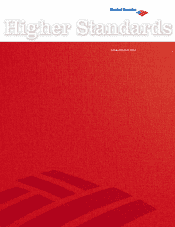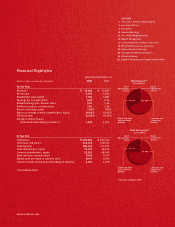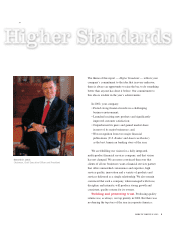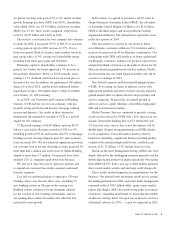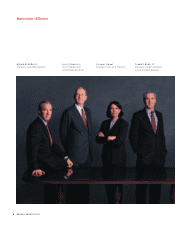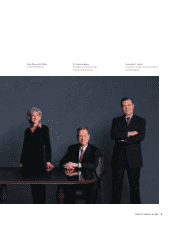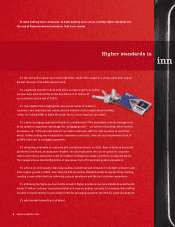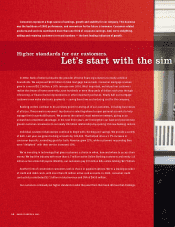Bank of America 2002 Annual Report Download - page 4
Download and view the complete annual report
Please find page 4 of the 2002 Bank of America annual report below. You can navigate through the pages in the report by either clicking on the pages listed below, or by using the keyword search tool below to find specific information within the annual report.
2
a crisis of public confidence in the ability of American
corporations to govern themselves effectively and ethically.
When your Board of Directors launched an initiative
two years ago to review, redesign and formally adopt new
governing principles, we thought we were simply setting
new standards required to become a world-class company.
We had no idea how rapidly these initiatives would become
a competitive advantage. Two years later, we have confidence
in our governance systems and continue to refine our policies
to ensure adequate independence, control and oversight of
our company’s activities.
Our governance structure enables us to manage all the
major aspects of the company’s business effectively through
an integrated process that includes financial, strategic, risk and
associate planning. In particular, we made important changes
in our processes for managing risk. As a financial services
company, we are in the business of taking risk — whether we
succeed depends largely on whether we take the right risks,
and whether we get paid appropriately for the risks we take.
We define risk broadly, including not only credit, market
and liquidity risk — the traditional concerns for banks — but
also operational risk, including risks related to systems,
processes or external events, as well as legal, regulatory and
reputation risks. In evaluating and responding to risk, we
employ three lines of accountability to protect shareholder
value: first, the line of business; second, Risk Management,
joined by other units such as Finance and Legal; and third,
our corporate audit function.
Our management processes, structures and policies help
us ensure compliance with laws and regulations and provide
clear lines of sight for decision-making and accountability.
But these disciplines represent only one side of governance.
The other side, corporate culture, is even more important.
It is corporate culture — championed by leadership and
sustained by every associate within the organization — that
determines corporate ethics.
One way we build and protect our culture is by aggres-
sively promoting our company’s core values to associates at
all times, as well as our Code of Ethics, which we updated
last fall. But we also know that actions speak louder than
words. And so, we foster a culture of openness, in which
healthy debate is encouraged and associates are expected
to blow the whistle on improper activity. We also do not
hesitate to separate ourselves from individuals who violate
our cultural standards and expectations, regardless of
performance or potential.
We believe results are important — but we believe how
we achieve results is equally important. Our commitment
to this principle is the key to sustaining the public trust and
confidence in our company.
Strong, consistent financial results. In 2002,
your company’s associates produced net income of $9.25
billion on revenue of $35.1 billion, compared to $6.79
billion and $35.0 billion in 2001. While these are solid
results taking into account continuing economic headwinds,
we are highly focused on increasing revenue in 2003 as
BANK OF AMERICA 2002
2001 2002
2000
$33.3
$35.0 $35.1
$18.6
$7.5
$6.8
$9.2
$20.7
2001 20022000 2001 20022000
Non Interest Expense
($ in billions)
Net Income
($ in billions)
Revenue
($ in billions)
(fully taxable equivalent)

